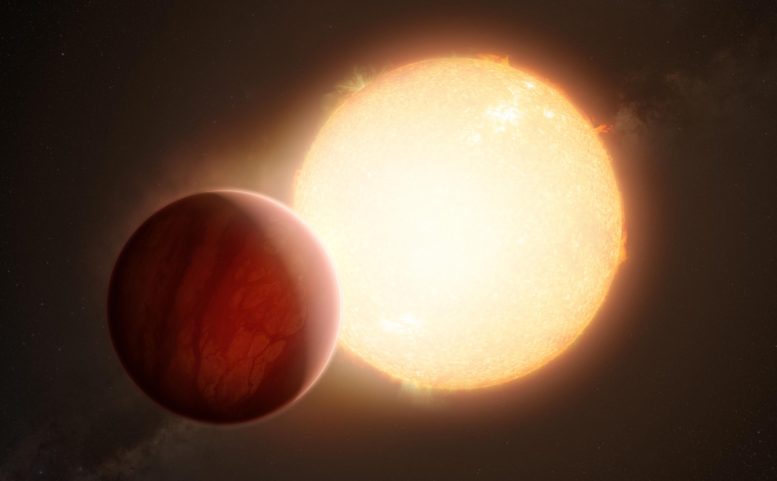
This artist’s impression shows an ultra-hot exoplanet, a planet beyond our Solar System, as it is about to transit in front of its host star. When the light from the star passes through the planet’s atmosphere, it is filtered by the chemical elements and molecules in the gaseous layer. With sensitive instruments, the signatures of those elements and molecules can be observed from Earth. Using the ESPRESSO instrument of ESO’s Very Large Telescope, astronomers have found the heaviest element yet in an exoplanet’s atmosphere, barium, in the two ultra-hot Jupiters WASP-76 b and WASP-121 b. Credit: ESO/M. Kornmesser
Astronomers have discovered the heaviest element ever found in an exoplanet atmosphere — barium. They were surprised to discover barium at high altitudes in the atmospheres of the ultra-hot gas giants WASP-76 b and WASP-121 b — two exoplanets, which are planets that orbit stars outside our Solar System. This unexpected discovery raises questions about what these exotic atmospheres may be like. The finding was made using the European Southern Observatory’s Very Large Telescope (ESO’s VLT).
“The puzzling and counterintuitive part is: why is there such a heavy element in the upper layers of the atmosphere of these planets?” says Tomás Azevedo Silva, a PhD student at the University of Porto and the Instituto de Astrofísica e Ciências do Espaço (IA) in Portugal. Silva led the study, which was published on October 13 in the journal Astronomy & Astrophysics.
WASP-76 b and WASP-121 b are no ordinary exoplanets. Both are known as ultra-hot Jupiters as they are comparable in size to Jupiter while having extremely high surface temperatures soaring above 1000°C (1800°F). This is due to their close proximity to their host stars, which also means an orbit around each star takes only one to two days. This gives these planets rather exotic features. For example, astronomers suspect that it rains iron on WASP-76 b.
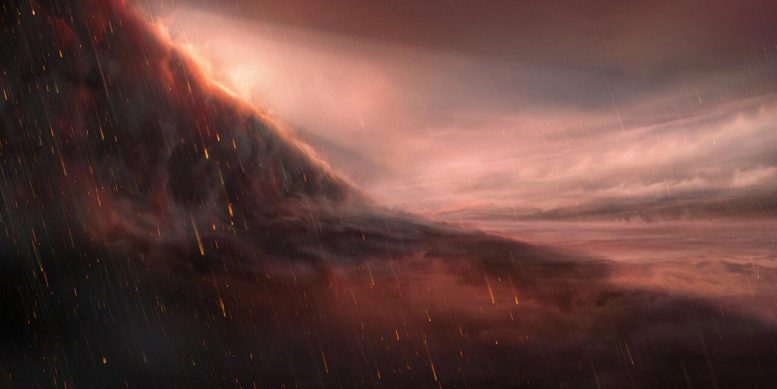
This illustration shows a night-side view of the exoplanet WASP-76b. The ultra-hot giant exoplanet has a day side where temperatures climb above 2400 degrees Celsius, high enough to vaporize metals. Strong winds carry iron vapor to the cooler night side where it condenses into iron droplets. To the left of the image, we see the evening border of the exoplanet, where it transitions from day to night. Credit: ESO/M. Kornmesser
But even so, the astronomers were surprised to find barium, which is 2.5 times heavier than iron, in the upper atmospheres of WASP-76 b and WASP-121 b. “Given the high gravity of the planets, we would expect heavy elements like barium to quickly fall into the lower layers of the atmosphere,” explains co-author Olivier Demangeon, a researcher also from the University of Porto and IA.
“This was in a way an ‘accidental’ discovery,” says Azevedo Silva. “We were not expecting or looking for barium in particular and had to cross-check that this was actually coming from the planet since it had never been seen in any exoplanet before.”
This animation illustrates the transit spectroscopy method that astronomers use to study the atmospheres of exoplanets. As the planet passes in front of its star, the light from the star gets filtered by elements and molecules in the gaseous layer, which alters the stellar light that we observe here on Earth, and leaves a unique chemical fingerprint in the observed spectrum.
The fact that barium was detected in the atmospheres of both of these ultra-hot Jupiters suggests that this category of planets might be even stranger than previously thought. Although we do occasionally see barium in our own skies, as the brilliant green color in fireworks, the question for scientists is what natural process could cause this heavy element to be at such high altitudes in these exoplanets. “At the moment, we are not sure what the mechanisms are,” explains Demangeon.
In the study of exoplanet atmospheres, ultra-hot Jupiters are extremely useful. As Demangeon explains: “Being gaseous and hot, their atmospheres are very extended and are thus easier to observe and study than those of smaller or cooler planets.”
The ultra-hot giant exoplanet WASP-76b orbits the star WASP-76, located some 390 light-years away in the constellation of Pisces. This video takes us on a journey to this system.
Determining the composition of an exoplanet’s atmosphere requires very specialized equipment. The team used the ESPRESSO instrument on ESO’s VLT in Chile to analyze starlight that had been filtered through the atmospheres of WASP-76 b and WASP-121 b. This made it possible to clearly detect several elements in them, including barium.
These new results show that we have only scratched the surface of the mysteries of exoplanets. With future instruments such as the high-resolution ArmazoNes high Dispersion Echelle Spectrograph (ANDES), which will operate on ESO’s upcoming Extremely Large Telescope (ELT), astronomers will be able to study the atmospheres of exoplanets large and small, including those of rocky planets similar to Earth, in much greater depth and to gather more clues as to the nature of these strange worlds.
Reference: “Detection of Barium in the atmospheres of ultra-hot gas giants WASP-76b & WASP-121b” by T. Azevedo Silva, O. D. S. Demangeon, N. C. Santos, R. Allart, F. Borsa, E. Cristo, E. Esparza-Borges, J. V. Seidel, E. Palle, S. G. Sousa, H. M. Tabernero, M. R. Zapatero Osorio, S. Cristiani, F. Pepe, R. Rebolo, V. Adibekyan, Y. Alibert, S. C. C. Barros, F. Bouchy, V. Bourrier, G. Lo Curto, P. Di Marcantonio, V. D’Odorico, D. Ehrenreich, P. Figueira, J. I. González Hernández, C. Lovis, C. J. A. P. Martins, A. Mehner, G. Micela, P. Molaro, D. Mounzer, N. J. Nunes, A. Sozzetti, A. Suárez Mascareño and S. Udry, 13 October 2022, Astronomy & Astrophysics.
DOI: 10.1051/0004-6361/202244489
The team is composed of T. Azevedo Silva (Instituto de Astrofísica e Ciências do Espaço, Universidade do Porto, Portugal [IA/UPorto, CAUP] and Departamento de Física e Astronomia Faculdade de Ciências, Universidade do Porto, Portugal [FCUP]), O. D. S. Demangeon (IA/UPorto, CAUP and FCUP), N. C. Santos (IA/UPorto, CAUP and FCUP), R. Allart (Department of Physics, and Institute for Research on Exoplanets, Université de Montréal, Canada and Observatoire astronomique de l’Université de Genève, Switzerland [UNIGE]), F. Borsa (INAF – Osservatorio Astronomico di Brera, Italy), E. Cristo (IA/UPorto, CAUP and FCUP), E. Esparza-Borges (Instituto de Astrofísica de Canarias, Spain [IAC] and Departamento de Astrofísica, Universidad de La Laguna, Tenerife, Spain [IAC-ULL]), J. V. Seidel (European Southern Observatory, Chile [ESO Chile]), E. Palle (IAC), S. G. Sousa (IA/UPorto), H. M. Tabernero (Centro de Astrobiología, CSIC-INTA, Spain [CSIC-INTA]), M. R. Zapatero Osorio (CSIC-INTA), S. Cristiani (INAF – Osservatorio Astronomico di Trieste, Italy [INAF Trieste]), F. Pepe (UNIGE), R. Rebolo (IAC and IAC-ULL), V. Adibekyan (IA/UPorto and FCUP), Y. Alibert (Physikalisches Institut, University of Bern, Switzerland), S. C. C. Barros (IA/UPorto and FCUP), V. Bourrier (UNIGE), P. Di Marcantonio (INAF Trieste), V. D’Odorico (INAF Trieste, Scuola Normale Superiore, Italy and Institute for Fundamental Physics of the Universe, Trieste, Italy [IFPU]), D. Ehrenreich (UNIGE and Centre Vie dans l’Univers, Faculté des sciences de l’Université de Genève, Switzerland), P. Figueira (UNIGE and IA/UPorto), J. I. González Hernández (IAC and Universidad de La Laguna, Departamento de Astrofísica, Spain), C. J. A. P. Martins (UA/UPorto and Centro de Astrofísica da Universidade do Porto, Portugal), A. Mehner (ESO Chile), G. Micela (INAF – Osservatorio Astronomico di Palermo, Italy), P. Molaro (INAF Trieste and IFPU), D. Mounzer (UNIGE), N. J. Nunes (Instituto de Astrofísica e Ciências do Espaço, Faculdade de Ciências da Universidade de Lisboa and Departamento de Física, Faculdade de Ciências da Universidade de Lisboa, Portugal), A. Sozzetti (INAF – Osservatorio Astrofisico di Torino, Italy), A. Suárez Mascareño (IAC and IAC-ULL), and S. Udry (UNIGE).


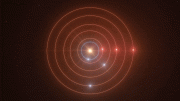
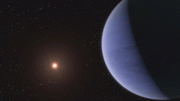
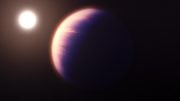
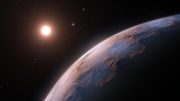
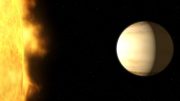

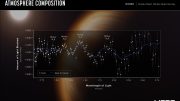
That would lead one to believe that there are even more exotic heavier elements that we have not yet discovered…interesting!
Maybe there are even heavier elements below the barium.